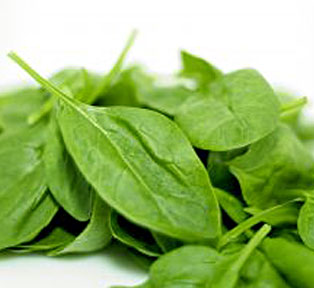North Carolina is set to adopt the FDA Model Food Code by reference, with a couple of state-specific adjustments, starting with the 2009 iteration. This means the Food Code becomes the law that commercial food service businesses will be required to follow. According to the code, commercial buyers of cut leafy greens should receive them at 41F (5C) or below. This requirement is to curb the growth of pathogens. Based on past outbreaks, the two pathogens of most concern are shiga-toxin producing E. coli and Salmonella spp. There is lots of debate around the validity of the guidance, as well as the economic impact the cooling requirement might have on producers marketing salad ingredients.
Cut leafy greens (as defined by the U.S. Food and Drug Administration) are fresh leafy greens whose leaves have been cut, shredded, sliced, chopped, or torn –beyond a root zone cut or harvest cut. The term leafy greens includes iceberg lettuce, romaine lettuce, leaf lettuce, butter lettuce, baby leaf lettuce (i.e., immature lettuce or leafy greens), escarole, endive, spring mix, spinach, cabbage, kale, arugula and chard. The term leafy greens does not include herbs such as cilantro or parsley (see here).
Cut leafy greens have not always required temperature control for safety. Following over 20 multi-state outbreaks between 1998 and 2008, ‘cut leafy greens’ was added to the definition of potentially hazardous food requiring time-temperature control for safety (TCS).
Storage and transport time and temperature are contributing factors for pathogen growth in cut leafy greens; water and nutrient availability, along with a suitable pH create an environment to support the growth of lots of food borne bacteria
Luo and colleagues (2010) demonstrated one log growth over a 4-day period after inoculating cut lettuce with E. coli O157:H7 at 53.6F (12C). Luo and colleagues also showed that if stored at 41F (5C), E. coli O157:H7 populations do not grow and experience slight decline. Lee and Baek (2008) showed that spinach inoculated with E. coli O157:H7 and stored at 44.6F (7C) would support pathogen growth This finding, coupled with other data, was modeled by Danyluk and Schaffner (2011) and supports assumptions that cut leafy greens that are temperature abused will support the growth of E. coli O157:H7 and that the pathogen’s populations may increase by as much as ten-fold each day (at optimum temperatures). Pathogens, once attached to the surface or internalized into cut surfaces of leafy greens, are only marginally affected by sanitizers (their use is not considered an adequate control strategy for the pathogens) leaving time/temperature as the most effective control.
While adoption of the FDA Model Food Code has brought attention to a potential barrier, the process of taking a raw agriculture product and turning it into a cut leafy green (for example heads of iceberg lettuce being shredded and sold in a package/box to retail) already requires refrigeration in post-processing and storage by FDA’s CFR 21 110.80 (as it’s applied in North Carolina).
While folks might argue the validity of the 41F or lower requirement for cut leafy greens, producers who are marketing cut leafy greens should focus on risk reduction through refrigeration (at of below 41F) in storage and transport regardless of the law (which also likely provides a higher quality product). Or harvest, cut and transport to a restaurant quickly, where time in lieu of temperature would be a valid control measure.
Maintaining temperatures below 41F for fresh-cut leafy greens has been raised as a practical and economic barrier for producers (as it is suggested that processors of these products do not typically have the means to control temperatures post-processing and during transport). There isn’t a whole lot of data available to support or refute this – so we’re going to generate some by quickly evaluating regular food coolers and ice/icepacks as a potential way for a producer to get the product to a buyer at 41F.
References:
Danyluk, M and Schaffner, D. 2011. Quantitative assessment of the microbial risk of leafy greens from farm to consumption: Preliminary framework, data, and risk estimates. J. Food Prot. 74:700–708.
Lee, S. Y., and Baek, S. 2008. Effect of chemical sanitizer combined with modified atmosphere packaging on inhibiting Escherichia coli O157:H7 in commercial spinach. Food Microbiol. 25:582–587.
Luo, Y., He, Q., and McEvoy, J. 2010. Effect of storage temperature and duration on the behavior of Escherichia coli O157:H7 on packaged fresh-cut salad containing romaine and iceberg lettuce. J. Food Sci. 75:M390-M397.
